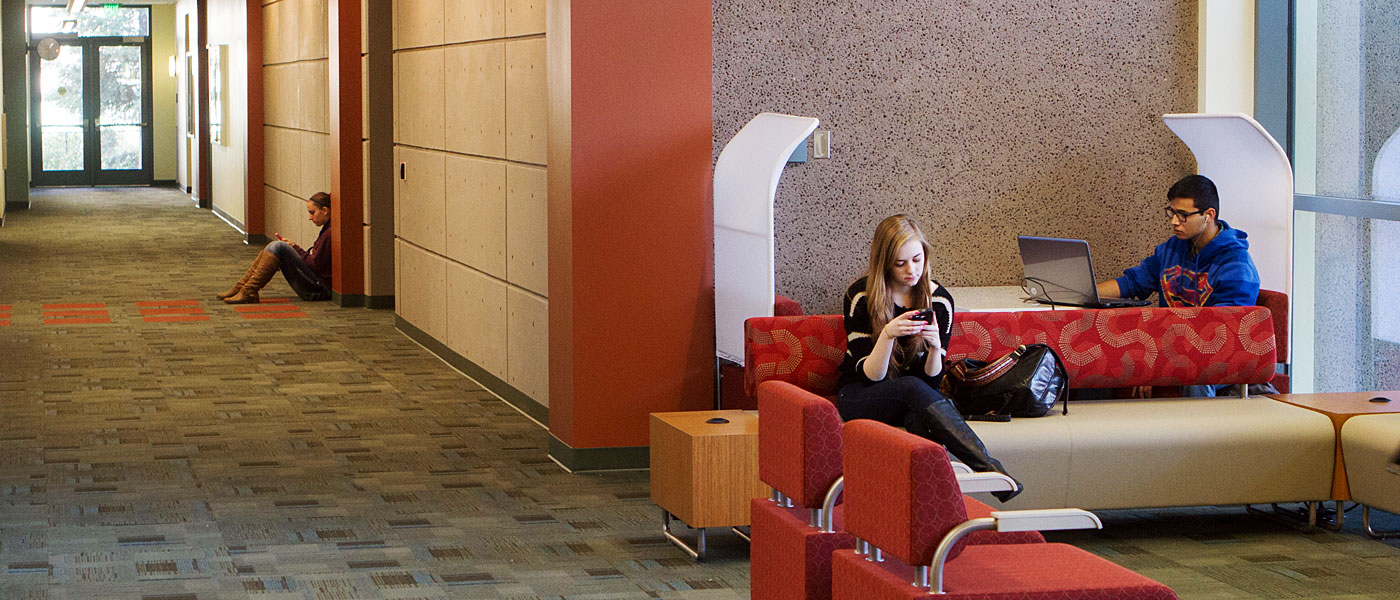
TURLOCK, Calif. — January 27, 2014 — The Science 1 Building at California State University, Stanislaus reopened for classes today at the start of the spring semester, following a two-year seismic retrofitting and extensive renovation project.
One of the oldest buildings on campus, Science 1 had its interior completely remodeled during construction, adding eight new classrooms and an open computer lab to the original floor plan. It will be the new home for the CSU Stanislaus departments of mathematics, philosophy and modern languages, as well as the School of Nursing, which now boasts a cutting-edge simulation lab to give hands-on training to the region’s next generation of nurses.
“In science, we are always looking forward,” said Reza Kamali, Dean of the College of Science. “Students want to see advancement, and this building represents that. The nursing simulation lab, in particular, will offer our students an experiential learning environment that mirrors real-life, clinical training to help them transition into professional practice.”
In addition to the renovation and the seismic retrofitting the building required, a number of energy-efficiency measures have also been put in place. Photovoltaic solar panels were installed on the roof and are expected to provide enough energy to meet all of the building’s needs except for heating, ventilation and air conditioning. Skylights were added and additional windows were built into the new walls, providing more natural light and reducing energy costs.
Science 1 — located near the state-of-the-art Nora and Hashem Naraghi Hall of Science, which opened in 2007 — underwent some cosmetic changes to its exterior, as well, including new paint on the building’s trim and new ramps and handrails. The building’s new layout provides larger open spaces and seating areas with power supply connections built into tables, making it more inviting and functional for students, faculty and staff alike.
The Department of Mathematics, for example, will now offer six bookcases full of texts, journals and other resources for students, glass cases to showcase student and faculty research, and enough tables and chairs to provide a quiet group-study area for up to 16 students.
“Math students who form study groups tend to perform better in classes than those who study on their own,” department Chair Tom Abram said. “Science 1 now provides opportunities for our students to form several different study groups within close proximity of the math department faculty.”
Melody Maffei, Associate Vice President for Capital Planning and Facilities Management, said the two-year, $18 million project — funded by the state through the sale of lease-revenue bonds, a source separate and distinct from the general state appropriations that fund university operations — was completed on time and within budget. Acme Construction of Modesto, Suarez-Kuehne Architecture of San Francisco and Van Pelt Construction Management of Fairfield all helped make the project a success.
“All of the team members worked closely with the university to create a state-of-the-art teaching and learning environment that adheres to CSU Stanislaus’ commitment to sustainability while complying with all current building codes,” Maffei said.